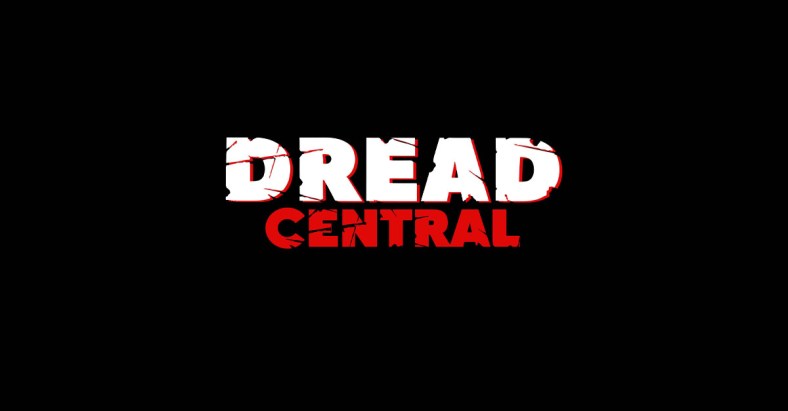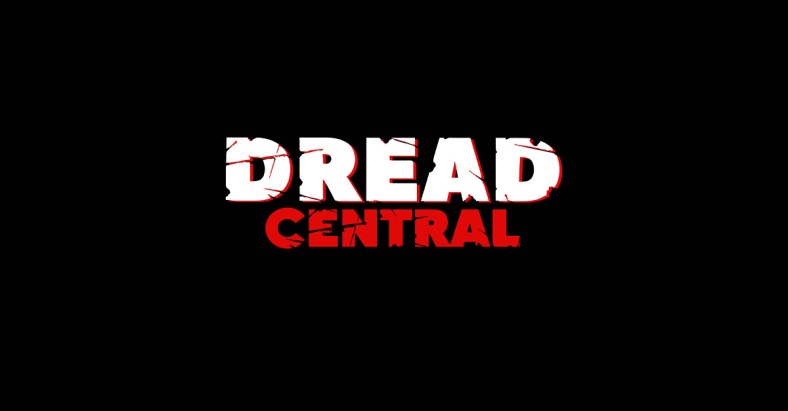Copycat Kills: In Defense of FRIDAY THE 13TH: A NEW BEGINNING

There are some ideas in the collective horror canon that seem so obvious their recurrent snubs strain credulity. These are the ideas that seem almost spectral– ideas that float on the periphery, gauzelike; you wonder when they are finally going to appear.
Friday the 13th: A New Beginning, the fifth in the long-running slasher franchise, was bold enough to manifest one such idea. What if some poor sap, aware of the perennial legacy of a franchise slasher, decided to imitate one? What if the cover of a notorious killer gave way to a copycat?
Synopsis:
Years after Tommy Jarvis (John Shepherd) murdered hockey-masked serial killer Jason Voorhees, he resides in a mental hospital and struggles with the trauma of the experience. When Tommy moves to an isolated halfway house, he has nightmares about Jason’s return, and soon one of the patients (Dominick Brascia) is killed. As the body count grows, Tommy begins to question his sanity and wonder if Jason has risen from the dead. But, to determine the killer’s identity, Tommy will need to survive.
It’s an obvious idea, one that has manifested often in real life– Scream, for instance, was routinely blamed for a series of ostensible copycat murders– but rarely been translated to the big screen. In its place has been a mythic collective of resurrections, druid symbolism, and messiah-like reincarnation.
Michael Myers routinely evades death on account of an ancient cult. Decisively killed in each entry, he is inexplicably alive and well for the next. Freddy Krueger, too, is often conclusively offed before the credits roll, yet the remunerative nature of his killings mandates a sequel and, thus, a reappearance. Jason Voorhees has perhaps the most incredible of resurrections, brought back to life by a lightning strike, a telekinetic teen girl, and an anchor.
Friday the 13th: A New Beginning, conversely, played things a little differently. Tommy Jarvis kills Jason at the end of The Final Chapter (spoiler: it was not, in fact, “the final chapter”), and Tommy is checked into a halfway house for recovering addicts and troubled youth. When a new series of killings begin, residents and staff wonder who might be responsible. After all, Jason Voorhees is dead, right?
Jason is dead, it turns out, and in a move that renders the entry perhaps the most maligned in the franchise, the killings are attributed to Roy Burns, the father of a young man killed at the halfway house. Donning Jason’s costume and modus operandi (and, curiously, his superhuman strength), Burns planned to eliminate everyone at the house and have the spree pinned on none other than Jason Voorhees. By the start of the fifth entry, Jason had amassed an incredible 49 kills. It wouldn’t be beyond the realm of possibilities, then, for him to rack up an additional nineteen, the total kill count for A New Beginning.
A New Beginning shares a great deal with its parallel horror brethren, then, most notably its chief inspiration– the Halloween franchise. After Michael Myers is killed in the second entry, the producers and filmmakers opted to turn the franchise into a seasonal anthology. In lieu of Michael Myers, each subsequent entry would instead be a standalone horror story, the first of which was Halloween III: Season of the Witch’s killer Halloween masks.
Synopsis:
Hospital emergency room Dr. Daniel “Dan” Challis (Tom Atkins) and Ellie Grimbridge (Stacey Nelkin), the daughter of a murder victim, uncover a terrible plot by small-town mask maker Conal Cochran (Dan O’Herlihy), a madman who’s planning a Halloween mass murder utilizing an ancient Celtic ritual. The ritual involves a boulder stolen from Stonehenge, the use of Silver Shamrock masks and a triggering device contained in a television commercial — all designed to kill millions of children.
Notoriously, Michael Myers was absent altogether, a move that infuriated fans and casual moviegoers at the time. Appropriately, Michael returned for Halloween 4, aptly titled The Return of Michael Myers. Inexplicably, Michael survived the fire at Haddonfield Memorial Hospital, having been unresponsive in a coma for nearly a decade.
Halloween III came out in 1982, while A New Beginning released in March of 1985. It’s hard to argue, then, that Season of the Witch’s reception didn’t directly or indirectly influence the development of future Friday the 13th sequels. Rather than work in a standalone, anthological format (something the television series would later do) the creative team opted for the most patently clear option: a copycat.
Unfortunately, the movie was a bust, resulting in the same ire and sense of betrayal Season of the Witch did. A lightning strike promptly resurrected Jason– the first appearance of colloquial “Zombie Jason”– in the sequel.
The nature of these sequels, though, and the Byzantine nature of their respective killers’ lives and death, pose some curious questions. What is the appropriate way to resurrect a profitable slasher franchise, into perpetuity, when the narrative constraints of the genre mandate some kind of categorical conclusion? There are reboots, remakes, and recalibrations, of course, and there are the aforementioned repeat revivals. There is, too, the Scream option, where baked into the very framework is the concept of a new killer each entry. I’d argue, though, that what Friday the 13th: A New Beginning tried was not only an enterprising choice but also one of the best.
I’m chary to admit that it had never crossed my mind what a Halloween movie, for instance, might look like with a copycat. It makes sense, of course, that some homicidal fanatic might emulate Michael Myers similarly to Peter Foley and his merry band of killer inspirations in 1995’s Copycat. The idea certainly isn’t sustainable in the long run– several copycat entries would undoubtedly strain credulity the same way messianic resurrections do– but it was an inspired choice for a hugely profitable horror series to make. Sure, the adjacent slayings might as well have been copy-pasted from previous entries, but the third act reveal is certainly shocking. If anything, it imbues A New Beginning with more zest and audacious energy than any other entry, barring perhaps the ninth entry, Jason Goes to Hell.
In an era of reductionist sequels and labyrinthine slasher mythologies, Friday the 13th intrepidly ventured toward the simplest explanation of all. Though poorly received at the time, it retroactively suffuses the fifth (out of twelve) entry with the same kind of curiosity as an old exhibition of biological rarities. More than that, it likely laid the groundwork for future entries with choices far more daring than other franchises. Jason possesses the minds of bumbling townsfolk in The Final Friday and hitchhikes to space in Jason X. A New Beginning was truly a new beginning for the franchise. Without that foundation, Jason might not be who we know him to be today. His legacy is eccentric, bold, and fearless. We have A New Beginning to thank for that.

Categorized:Editorials News

